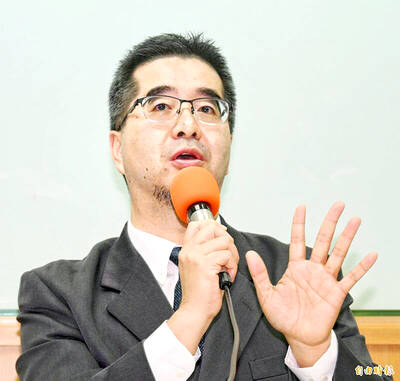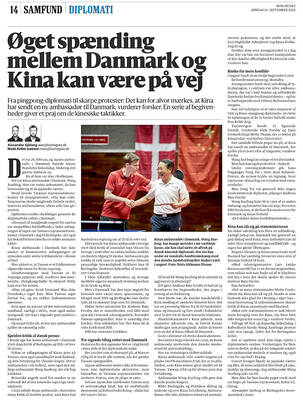Billboards showing before-and-after photographs of “an ugly girl who turned pretty” or “a dork who became a fashionable man” via the intervention of an aesthetic medicine clinic have been commonplace in cities across the nation in recent years, but now a fad for these types of minimally invasive cosmetic treatments appears to be dying out, observers said.
While the Ministry of Health and Welfare claims that it does not have data on how many clinics practicing aesthetic medicine there are across the nation — due to a difficulty in defining them — sources within the industry said the number has dropped from nearly 2,000 two years ago to a little more than 1,000.
Several years ago there was a boom in the number of these clinics, but many have now closed down, with about 30 percent closing after only being in operation for two years, Chinese Society of Cosmetic Surgery and Anti-Aging Medicine committee convener Sung Feng-i (宋奉宜) said.
While there still seem to be a lot of clinics in business, many are being run by new owners, he said, adding that sometimes the previous owners left before their clients completed their pre-paid treatment courses.
People often forget that cosmetic procedures are a form of medical intervention, because patients elect to undergo the procedures voluntarily, and unlike hospitals, aesthetic medicine facilities can attract customers by offering treatments to healthy people, Sung said.
However, demand for aesthetic medicine can be induced, he said.
If a person has small eyes and a flat face there is nothing wrong with them, but by suggesting that “you cannot be beautiful if you do not change it,” people who are insecure about their appearance can be convinced to undergo procedures, he said.
That is why aesthetic medicine employs marketing techniques and often becomes commercialized, he added.
Only a small number of aesthetic medicine practitioners own their clinics, the majority of them are hired, Sung said, adding that the “wealthy owners” make all the decisions relating to management, marketing and procurement, while there is a lot of competition among practitioners for jobs.
In addition, many investors have lost money in clinics that were not well managed and subsequently closed down, he said.
Legal disputes involving aesthetic medicine have increased by up to 15 percent in the past decade, according to Taiwan Healthcare Reform Foundation statistics.
The majority of disputes related to information asymmetry, undue inducement, clients being unaware of potential risks and procedures not meeting their expectations, statistics showed.
As the market for aesthetic medicine grew, the industry became flooded with false advertising and commercial marketing, Kaohsiung Medical Association president and dermatologist Ko Shih-chung (柯適中) said.
Many aesthetic medicine clinics asked counselors and beauticians to use marketing tactics with clients, such as offering discount tryout prices, “buy 10 get one free” treatment courses, or by slashing prices, meaning that the field has become overwhelmed by commercialized marketing, he said.
There was a case in which a client paid NT$150,000 for a course of treatments aimed at removing black spots from her face, but the treatment caused skin pigmentation and the clinic refused to accept responsibility, Ko said.
The patient had to spend more money to solve the problem, he said, adding that there are many unnecessary courses on the market that only cause skin inflammation and skin pigmentation.
If people choose clinics because they offer the cheapest prices, medical risks and legal disputes resulting from unprofessional treatment are likely to increase, which could have a negative impact on consumers’ perceptions of the industry, he said.
Having observed the industry for many years, Sung said there would only be two types of aesthetic medicine clinics left in the future.
The first would be run by doctors with good technical skills and would attract clients by word-of-mouth.
The second would be led by financial groups that manage a brand and train doctors to offer standardized services, resulting in mass-produced facial features such as eyes or noses, he said, adding that this type of scenario is what the market in South Korea looks like, where many pretty faces are created without distinguishing features.
Cosmetic dentistry has also become popular, he said, adding that according to ministry statistics, the number of dental clinics has increased from about 5,550 in 1990 to about 6,630 this year.

The Coast Guard Administration (CGA) yesterday said it had deployed patrol vessels to expel a China Coast Guard ship and a Chinese fishing boat near Pratas Island (Dongsha Island, 東沙群島) in the South China Sea. The China Coast Guard vessel was 28 nautical miles (52km) northeast of Pratas at 6:15am on Thursday, approaching the island’s restricted waters, which extend 24 nautical miles from its shoreline, the CGA’s Dongsha-Nansha Branch said in a statement. The Tainan, a 2,000-tonne cutter, was deployed by the CGA to shadow the Chinese ship, which left the area at 2:39pm on Friday, the statement said. At 6:31pm on Friday,

The Chinese People’s Liberation Army Navy’s (PLAN) third aircraft carrier, the Fujian, would pose a steep challenge to Taiwan’s ability to defend itself against a full-scale invasion, a defense expert said yesterday. Institute of National Defense and Security Research analyst Chieh Chung (揭仲) made the comment hours after the PLAN confirmed the carrier recently passed through the Taiwan Strait to conduct “scientific research tests and training missions” in the South China Sea. China has two carriers in operation — the Liaoning and the Shandong — with the Fujian undergoing sea trials. Although the PLAN needs time to train the Fujian’s air wing and

The American Institute in Taiwan (AIT) put Taiwan in danger, Ma Ying-jeou Foundation director Hsiao Hsu-tsen (蕭旭岑) said yesterday, hours after the de facto US embassy said that Beijing had misinterpreted World War II-era documents to isolate Taiwan. The AIT’s comments harmed the Republic of China’s (ROC) national interests and contradicted a part of the “six assurances” stipulating that the US would not change its official position on Taiwan’s sovereignty, Hsiao said. The “six assurances,” which were given by then-US president Ronald Reagan to Taiwan in 1982, say that Washington would not set a date for ending arm sales to Taiwan, consult

A Taiwanese academic yesterday said that Chinese Ambassador to Denmark Wang Xuefeng (王雪峰) disrespected Denmark and Japan when he earlier this year allegedly asked Japan’s embassy to make Taiwan’s representatives leave an event in Copenhagen. The Danish-language Berlingske on Sunday reported the incident in an article with the headline “The emperor’s birthday ended in drama in Copenhagen: More conflict may be on the way between Denmark and China.” It said that on Feb. 26, the Japanese embassy in Denmark held an event for Japanese Emperor Naruhito’s birthday, with about 200 guests in attendance, including representatives from Taiwan. After addressing the Japanese hosts, Wang